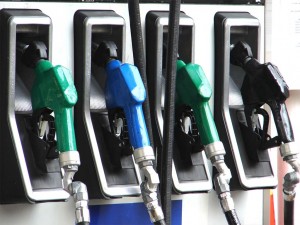Though gas prices ended the year well below their 2013 peak, the New Year is off to a poor start, 2014 is off to a bad start, motorists in much of the country paying the highest price on record for the start of the year.
There have been a number of recent reports suggesting that with oil production rising – especially in the U.S. – the cost of fuel could hold steady or even decline over the next several years. But as the holiday season comes to an end, motorists aren’t catching a break. According to AAA, the week began with prices across the U.S. averaging $3.31 a gallon for regular no-lead gas.
It was the fifth consecutive January 1 that Americans paid more at the pump than the year prior and the fourth straight year with a new record to start the year, according to AAA. The national average prices to begin 2011, 2012 and 2013 were $3.07, $3.28 and $3.29 respectively.
Nonetheless, despite a recent run of record high starts, gas prices in 2013 averaged less than 2012 and prices in 2014 should be slightly lower than this year, barring any unforeseen market moving news, AAA said, lower prices facilitated by increased U.S. refining capacity and crude oil production.
“These domestic factors help provide some insulation from the price impact of supply issues like refinery outages or international production concerns, however it’s possible that unexpected events or greater than forecast economic growth could result in higher prices for motorists in 2014,” AAA noted in its latest national “Gas Gauge” survey.
(For Venezuelans, nickel gas may soon be just a memory. Click Here for the story.)
Government and private agencies that track fuel prices also expect prices to remain stable or fall in the months to come.
The U.S. Energy Information Agency noted in a report released last month that the production of gasoline in the U.S. is now at its highest level in more than 30 years. U.S. gasoline production increased 4.3% to 9.72 million barrels a day in the week ended Dec. 20, the most in data going back to 1982, according to the EIA, which noted domestic crude oil as U.S. production is also at its highest level in 25 years. At the same, the fuel economy of new vehicles continues to improve.
(Will gas prices fall, long-term? Click Here for the full story.)
However, the pump price for gasoline continues to fluctuate from week to week and from state to state across the country, according to AAA.
AAA reported the national average price at the pump this week is $3.31 per gallon. Tracking site GasBuddy.com echoed that at $3.308 a gallon. This is six cents more expensive than one week ago, four cents more than one month ago, and two cents more than the same date last year, according to AAA. After falling on 19 of 22 days, the national average has now increased for 11 straight days.
(2013 saw vehicle fuel economy climb to record levels. Click Herefor the story.)
The rising national average has been reflected across the country. Motorists in every state are paying more at the pump than one week ago, and, while prices in four states have declined a penny or two per gallon over the last two weeks, motorists in four states have experienced more than 20-cent jumps during the same span.
This includes increases of 22 cents in Minnesota, 24 cents in Indiana, 27 cents in Michigan and 28 cents in Ohio, which have been keyed by refinery issues in that region. The least expensive average gas prices in the nation are in Montana at $3.01 per gallon, Oklahoma at $3.04 per gallon and Missouri at $3.06, while the most expensive are in Hawaii $3.94 per gallon, Connecticut at $3.70 per gallon and New York at $3.69, the AAA Gas Gauge reported.
The lowest prices in the country? According to GasBuddy, Utah comes in at just $3.02 a gallon, Montana close behind at $3.03. But stations in Billings, Montana are currently pumping the lowest-priced fuel in the U.S., averaging just $2.90 a gallon.

